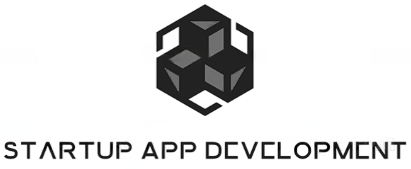In today’s fast-paced digital world, finding the right app development partner is crucial for the success of your project. Making the right choice can lead to a seamless workflow, timely delivery, and a product that meets, or even exceeds, your expectations. This blog will guide you through the key qualities to consider when choosing your app development collaborator.
Technical Expertise and Experience
Expertise and experience in app development are foundational qualities. Your partner should have a proven track record in building successful applications similar to what you’re envisioning. This ensures that they possess the necessary skills to handle challenges that may arise during the development process.
Beyond having a strong technical foundation, your development partner should understand the intricacies of various platforms, whether you aim to develop a cross-platform application or focus specifically on iOS or Android. This versatility can save both time and resources. Experienced developers have honed their skills through years of tackling complex problems, making them invaluable to navigating the app industry’s landscape.
Furthermore, their expertise should extend to understanding the latest trends and technologies in the app development world, as noted by top companies with a focus on revolutionizing the industry. A keen understanding of what works—combined with the ability to innovate—can set your project apart from competitors in a crowded market.
Effective Communication Skills
Effective communication can make or break a collaboration. Your development partner should be able to clearly express ideas, provide updates, and respond to queries in a timely fashion. This quality ensures that all stakeholders are on the same page and that the project progresses smoothly.
Clear communication is critical when discussing your vision and goals. A collaborative mindset allows developers to interpret feedback accurately and adapt accordingly, promoting a more agile and responsive project environment. Regular updates and transparency build trust and ensure that adjustments can be made before minor misunderstandings evolve into major setbacks.
Additionally, a development partner who is adept at expressing technical concepts in layman’s terms can significantly enhance your understanding of the project. Their ability to simplify complex technological jargon ensures that you remain informed about every step without unnecessary complications, aiding collaboration.
Flexibility and Adaptability
Flexibility and adaptability are crucial in today’s ever-changing tech landscape. A strong development partner should not only adapt to new technologies and trends but also incorporate feedback and changes quickly to stay aligned with your project goals.
An adaptable partner can seamlessly transition between different programming languages and frameworks, which is especially important when unexpected challenges arise. Their ability to pivot quickly—without compromising on the quality of your app—demonstrates a higher level of competence and commitment to meeting your needs. This is emphasized by industry leaders in app development for companies looking to remain competitive.
Furthermore, this adaptability extends beyond technology alone. An understanding of market trends and user expectations allows developers to tailor features and functionalities even mid-project, significantly enhancing the finished product’s relevance and appeal in the market.
Commitment to Quality Assurance
A reliable app development partner should place a high priority on quality assurance. They must have robust testing processes to ensure that the app is reliable, bug-free, and delivers an excellent user experience.
The mark of a thorough quality assurance process is attention to detail at every stage of development. This involves not only testing during the course of the project but also continuous updates post-deployment to catch any issues that might arise with varying user feedback. As highlighted by Moveo Developers, meticulous coding and comprehensive testing are integral to producing a high-quality application.
Equally as important is the development partner’s willingness to listen to feedback and act on it promptly. This demonstrates a commitment not just to initial success but to long-term sustainability, ensuring your app remains relevant and functional over its lifecycle.
Collaborative and Client-Centric Approach
Working with a partner who values collaboration and keeps your needs at the forefront is essential. They should integrate your feedback into the development process and be genuinely committed to realizing your vision, thereby ensuring a successful end product.
A client-centric approach guarantees that the final product aligns closely with your initial goals while being adaptable to any changes in market dynamics or user needs. Such alignment can be achieved through consistent engagement and periodic reviews, allowing your vision to evolve along with industry demands, which is a hallmark of innovative development agencies.
Ultimately, the right partner becomes an extension of your team, bringing not just expertise but enthusiasm for your project. They are motivated not solely by mutual success, but also by a genuine desire to see your idea come to life in the most engaging and impactful way possible. This synergy is vital for creating products that are not only well-crafted but also well-loved by their intended users.
Final Thoughts on Choosing Your App Development Partner
Choosing the right app development partner involves evaluating technical expertise, communication skills, and their commitment to collaboration. By focusing on these essential qualities, you increase your chances of achieving a successful and impressive app launch. Remember, the right partner is not just a service provider, but a valuable part of your journey to digital success.










